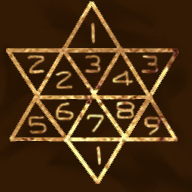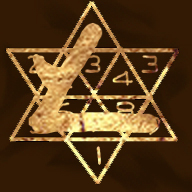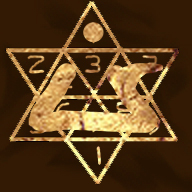Though not exactly new in that I designed this alphabet for a barbarian culture I developed (and its few thousand word language) many years ago, since I'll be re-using this in the next novel in the series I'm writing (taking place in 2030) for the Pastoral pidgin vocabulary, I thought you might enjoy seeing it.

How it looks when applied:

Written from top to bottom, left to write to accommodate a primarily right handed people and to cope with potentially messy writing implements, it is intended to be easy to learn, and easy for a non-user of it to decipher. Based in threes, it utilizes 3 simple marks, the line, point and talon. Each shape is generated by filling the outer edge of a triangle divided 9x, excluding the space for the row of three letters it denotes. An additional 3 portions designate which letter in that line of three it is using a talon.
3-base symbols (line, talon, point)
A triangle (3-sides) divided into 9-parts, three designators added around it.


By avoiding one of the 9 sub-divisions, you get a shape.


In the end, you actually only have 3-shapes:



Each of those 3-shapes, have 3-designator/talon positions, and each of those 9-possible variations is rotated one of 3-ways. What that means is, actually only 9-printing blocks would be required to generate the entire alphabet. Numerals are even simpler, requiring only 3-printing blocks rotated 3-postitions, plus zero.
K2
How it looks when applied:
Written from top to bottom, left to write to accommodate a primarily right handed people and to cope with potentially messy writing implements, it is intended to be easy to learn, and easy for a non-user of it to decipher. Based in threes, it utilizes 3 simple marks, the line, point and talon. Each shape is generated by filling the outer edge of a triangle divided 9x, excluding the space for the row of three letters it denotes. An additional 3 portions designate which letter in that line of three it is using a talon.
3-base symbols (line, talon, point)
A triangle (3-sides) divided into 9-parts, three designators added around it.


By avoiding one of the 9 sub-divisions, you get a shape.


In the end, you actually only have 3-shapes:



Each of those 3-shapes, have 3-designator/talon positions, and each of those 9-possible variations is rotated one of 3-ways. What that means is, actually only 9-printing blocks would be required to generate the entire alphabet. Numerals are even simpler, requiring only 3-printing blocks rotated 3-postitions, plus zero.
K2

